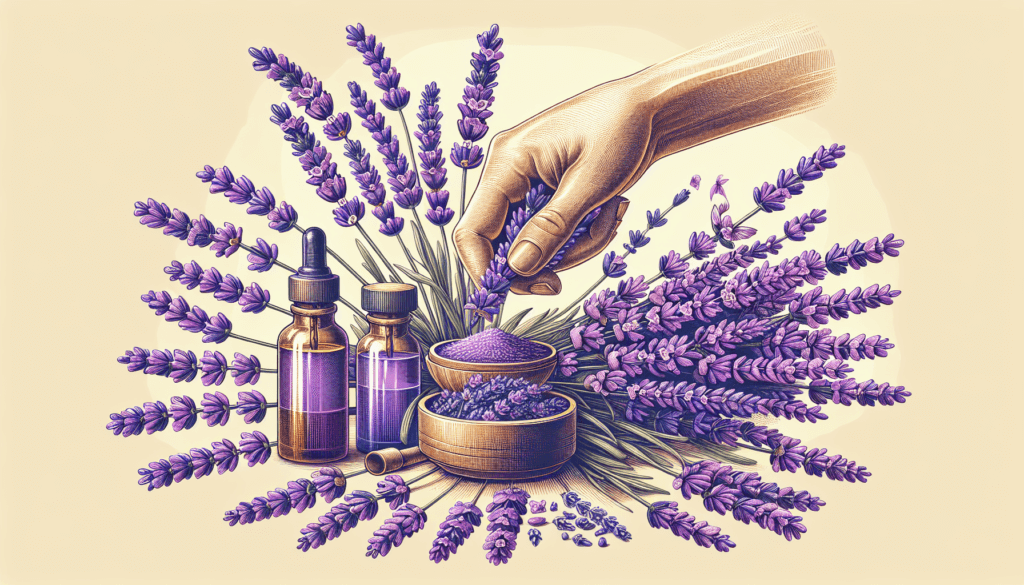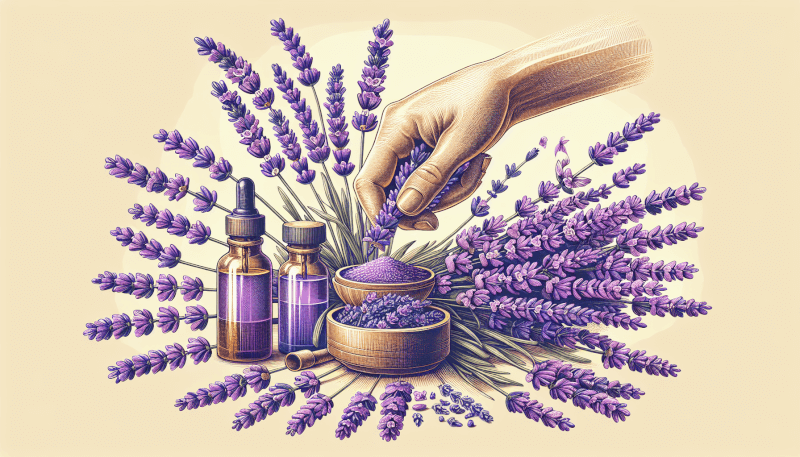Are you looking for a natural and holistic approach to managing pain? Look no further than aromatherapy! This article explores the fascinating world of how aromatherapy can contribute to pain relief. Whether you suffer from chronic pain or occasional discomfort, the power of essential oils in treating various types of pain is not to be underestimated. So grab a cup of tea, sit back, and let’s delve into the wonderful world of aromatherapy and its incredible benefits for pain relief.

What is Aromatherapy?
Definition of aromatherapy
Aromatherapy is a holistic healing practice that utilizes plant extracts, known as essential oils, to promote physical, emotional, and mental well-being. These essential oils are derived from various parts of plants, such as flowers, leaves, stems, and roots, and are carefully selected for their therapeutic properties. Aromatherapy is often used in combination with other relaxation techniques, such as massage or meditation, to enhance the overall healing experience.
Uses of aromatherapy
Aromatherapy has a wide range of uses and can be beneficial for various health conditions. It is commonly employed for pain management, stress relief, relaxation, sleep improvement, mood enhancement, and immune system support. Additionally, aromatherapy can be utilized in skincare routines, as the therapeutic properties of essential oils can help with acne, eczema, and other skin conditions. Furthermore, it is often used in spas and wellness centers to create an inviting and soothing environment.
Benefits of aromatherapy
The benefits of aromatherapy extend beyond just the physical healing of the body. The inhalation or topical application of essential oils can have a profound impact on emotions and mental well-being. Aromatherapy has been shown to reduce anxiety, improve mood, alleviate symptoms of depression, and promote an overall sense of relaxation and tranquility. Moreover, certain essential oils possess anti-inflammatory, antimicrobial, and analgesic properties, making them effective in pain management and reducing inflammation.
Understanding Pain
Definition of pain
Pain is a sensory and emotional experience that is often associated with tissue damage or injury. It is your body’s way of alerting you to potential harm or danger. Pain can vary in intensity and duration, and it can be acute, chronic, or intermittent. While acute pain is usually short-term and related to a specific injury, chronic pain persists for an extended period, often lasting for months or even years. Understanding the different types and causes of pain is crucial in addressing and managing it effectively.
Types of pain
Pain can be classified into several categories, including nociceptive pain, neuropathic pain, psychogenic pain, and idiopathic pain. Nociceptive pain is the most common type and occurs when there is actual or potential damage to body tissues, such as from cuts, burns, or fractures. Neuropathic pain, on the other hand, stems from damage or dysfunction of the nerves themselves and is often characterized by a burning or shooting sensation. Psychogenic pain refers to pain that is primarily caused by psychological factors, such as stress or emotional trauma. Idiopathic pain refers to pain that has no identifiable cause.
Causes of pain
Pain can have numerous underlying causes, ranging from physical injuries and underlying medical conditions to psychological factors. Common causes of pain include musculoskeletal injuries, such as sprains or strains, arthritis, fibromyalgia, nerve damage, surgical procedures, migraines, and psychological factors like stress or anxiety. Identifying and addressing the root cause of pain is essential for effective pain management and finding appropriate treatment approaches.
Aromatherapy and Pain Relief
Evidence-based research
Numerous studies have shown the effectiveness of aromatherapy in relieving pain and enhancing overall well-being. Research has demonstrated that certain essential oils possess analgesic and anti-inflammatory properties, which can help alleviate pain from various sources. Additionally, aromatherapy has been found to reduce anxiety and stress, which can indirectly contribute to pain relief by promoting relaxation and enhancing the body’s natural ability to heal itself.
Mechanism of action
The exact mechanism by which aromatherapy relieves pain is not fully understood, but several theories have been proposed. Inhalation of essential oils stimulates the olfactory system, which sends signals to the brain, including the limbic system, which is responsible for emotions and pain regulation. The inhalation of certain essential oils can also trigger the release of endorphins, which are natural pain-relieving and mood-enhancing compounds. When applied topically, essential oils can penetrate the skin and interact with underlying tissues, reducing inflammation and providing localized pain relief.
Effective essential oils for pain relief
Several essential oils have shown promise in relieving pain and reducing inflammation. Lavender oil, known for its calming properties, has been found effective in reducing pain and promoting relaxation. Peppermint oil, with its cooling and analgesic properties, can help alleviate headaches, muscle aches, and joint pain. Eucalyptus oil, with its anti-inflammatory and analgesic properties, can be beneficial for respiratory conditions and muscle soreness. Rosemary oil, known for its analgesic and anti-inflammatory effects, can help relieve muscle pain and arthritis. Chamomile oil, with its soothing properties, can assist in reducing tension headaches and easing muscle aches.
How Aromatherapy Works
Inhalation
Inhalation is one of the primary methods of using essential oils in aromatherapy. When you inhale essential oils, the molecules enter your nasal passages and stimulate the olfactory receptors. These receptors send impulses to the limbic system in the brain, which governs emotions, memory, and pain perception. Inhalation can be achieved through methods such as steam inhalation, diffusers, or simply inhaling the fragrance directly from an essential oil bottle.
Topical application
Topical application involves applying essential oils directly to the skin, usually diluted with a carrier oil to minimize the risk of skin irritation. When applied topically, essential oils are absorbed into the bloodstream through the skin and can have localized or systemic effects. Topical application is commonly used for pain relief, as the essential oils can directly target the affected area and provide localized relief. Massage is often combined with topical application, as it helps improve circulation and enhances the absorption of the oils.
Effects on the brain and nervous system
Aromatherapy has a profound impact on the brain and nervous system. Essential oils can affect brain wave activity, promoting relaxation, reducing stress, and improving mood. Inhalation of certain essential oils stimulates the release of neurotransmitters, such as serotonin and dopamine, which are involved in regulating mood, pain perception, and overall well-being. Additionally, essential oils have been found to modulate the autonomic nervous system, helping to balance the body’s stress response and promote a state of calm and relaxation.
Essential Oils for Pain Relief
Lavender oil
Lavender oil is one of the most popular essential oils used for pain relief and relaxation. It possesses analgesic, anti-inflammatory, and sedative properties, making it effective in reducing pain, inflammation, and promoting sleep. It can be used topically for muscle aches, joint pain, or headaches, or inhaled for relaxation and stress relief.
Peppermint oil
Peppermint oil is known for its cooling and analgesic properties. It can provide relief from headaches, muscle aches, and joint pain. Topical application of peppermint oil can soothe sore muscles and stimulate blood circulation, aiding in pain relief.
Eucalyptus oil
Eucalyptus oil has both analgesic and anti-inflammatory properties, making it a useful essential oil for pain relief. It can be effective in reducing muscle soreness, joint pain, and headaches. Inhalation of eucalyptus oil can also provide relief from respiratory conditions such as congestion and cough.
Rosemary oil
Rosemary oil is known for its analgesic and anti-inflammatory effects. It can help relieve muscle pain, arthritis, and headaches. Additionally, rosemary oil has been found to improve circulation and enhance mental focus and concentration.
Chamomile oil
Chamomile oil has soothing and anti-inflammatory properties, making it beneficial for pain relief. It can be used topically for muscle aches, tension headaches, and menstrual cramps. Inhalation of chamomile oil can also help reduce stress and promote relaxation.
Benefits of Aromatherapy for Pain Relief
Reduces inflammation
Many essential oils used in aromatherapy possess anti-inflammatory properties that help reduce inflammation, a common cause of pain. By targeting and reducing inflammation, aromatherapy can provide relief from conditions such as arthritis, muscle strains, and joint pain.
Soothes muscle aches and tension
The analgesic and muscle-relaxing properties of certain essential oils make aromatherapy effective in soothing muscle aches, spasms, and tension. Essential oils, when combined with massage or topical application, can penetrate deep into the muscles, providing localized pain relief and promoting relaxation.
Promotes relaxation and stress relief
Aromatherapy is widely recognized for its ability to promote relaxation and reduce stress levels. By inhaling or applying essential oils, you can trigger the release of neurotransmitters that promote calmness and relaxation, helping to alleviate stress-related pain and tension.
Enhances mood and emotional well-being
Aromatherapy has a profound impact on emotions and mental well-being. Essential oils can have a positive influence on mood, promoting feelings of happiness, calmness, and contentment. By improving emotional well-being, aromatherapy can indirectly contribute to pain relief by reducing stress and improving overall resilience.
Aromatherapy Techniques for Pain Relief
Massage
Massage is a widely used technique in aromatherapy for pain relief. By combining the therapeutic properties of essential oils with the physical manipulation of the body, massage can provide both localized and systemic pain relief. The massage techniques help improve circulation, enhance the absorption of essential oils, and promote relaxation.
Hot or cold compress
Hot or cold compresses can be used to apply essential oils topically and enhance their pain-relieving effects. Hot compresses can help relax muscles and increase blood flow, while cold compresses can reduce inflammation and numb the area. Adding a few drops of essential oils to the compress can amplify the pain-relieving benefits.
Baths and showers
Adding a few drops of essential oils to a warm bath or shower can create a relaxing and therapeutic experience. The steam from the bath or shower helps to disperse the aroma, allowing you to inhale the essential oils and experience their pain-relieving and relaxing effects. Additionally, the absorption of the essential oils through the skin can provide localized pain relief.
Diffusers and inhalers
Diffusers and inhalers are popular methods of inhaling essential oils for pain relief. Diffusers disperse the essential oil molecules into the air, allowing you to inhale them easily. Inhalers provide a more focused method of inhalation, where you can apply a few drops of essential oil onto a cotton pad or inhaler stick and inhale directly. Both methods are effective in promoting relaxation, reducing stress, and managing pain.
Safety Considerations
Dilution guidelines
When using essential oils for aromatherapy, it is essential to adhere to proper dilution guidelines. Essential oils are highly concentrated and can cause skin irritation or other adverse reactions if applied undiluted. A general rule of thumb is to dilute essential oils in a carrier oil, such as coconut oil or almond oil, at a ratio of 2-3 drops of essential oil per teaspoon of carrier oil. However, some essential oils may require a higher or lower dilution ratio, so it is important to research and follow specific guidelines for each essential oil.
Potential allergic reactions
While essential oils are generally safe for most people when used properly, some individuals may experience allergic reactions or sensitivities to certain oils. It is recommended to perform a patch test before using a new essential oil topically. Apply a small amount of diluted essential oil to a small area of skin and monitor for any adverse reactions, such as redness, itching, or swelling.
Avoiding toxic essential oils
It is crucial to avoid using toxic essential oils, as they can cause severe adverse reactions and harm your health. Some essential oils, such as wintergreen, camphor, and pennyroyal, can be toxic if ingested or used in high concentrations. It is important to research and verify the safety of essential oils before using them in aromatherapy.
Complementary Approaches
Combining aromatherapy with other therapies
Aromatherapy can be used in conjunction with other complementary approaches to enhance pain relief. For example, combining aromatherapy with massage therapy can provide a synergistic effect, promoting relaxation, improving circulation, and reducing muscle tension. Aromatherapy can also be integrated into acupuncture or chiropractic treatments to enhance the overall healing experience.
Benefits of integrating aromatherapy into pain management programs
Integrating aromatherapy into pain management programs can offer several benefits. Aromatherapy can reduce reliance on pharmaceutical pain medications, minimize their side effects, and provide a natural and holistic alternative for pain relief. Aromatherapy also encourages relaxation and stress reduction, which can help in reducing the perception of pain and improving overall well-being.
Consulting healthcare professionals for guidance
While aromatherapy can be a valuable tool for pain relief, it is important to consult healthcare professionals for guidance, especially if you have underlying health conditions or are taking medications. They can provide personalized advice on the safe and effective use of aromatherapy and help ensure it complements your existing treatment plan.
Conclusion
Summary of key points
Aromatherapy is a holistic healing practice that utilizes the therapeutic properties of plant-derived essential oils to promote pain relief, relaxation, and overall well-being. Essential oils can be inhaled or applied topically to provide pain relief by reducing inflammation, soothing muscle aches, promoting relaxation, and enhancing mood. Aromatherapy techniques such as massage, hot or cold compresses, baths, showers, and inhalers can be used to maximize the benefits of essential oils.
Encouraging further research
While existing research supports the use of aromatherapy for pain relief, there is still a need for further investigation to better understand its mechanisms of action and efficacy. Conducting well-designed clinical trials and studies can help validate the benefits of aromatherapy and provide more evidence-based recommendations for its use in pain management.
Promoting the use of aromatherapy for pain relief
Aromatherapy offers a natural and holistic approach to pain relief and can be a valuable tool in managing various types of pain. By promoting relaxation, reducing inflammation, and enhancing mood, aromatherapy can significantly contribute to the overall well-being of individuals experiencing pain. By incorporating aromatherapy into pain management programs and seeking guidance from healthcare professionals, individuals can harness the potential benefits of this ancient practice and enhance their quality of life.


